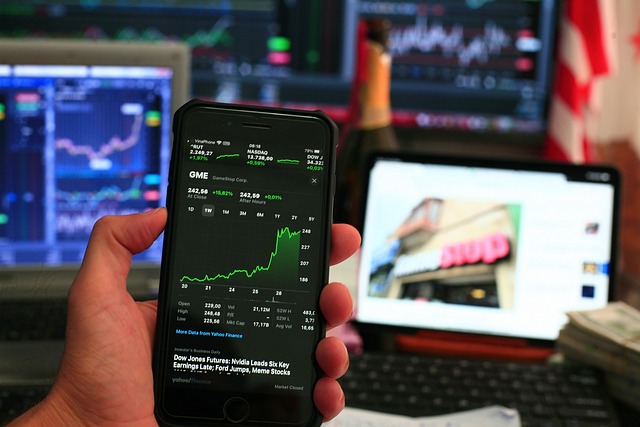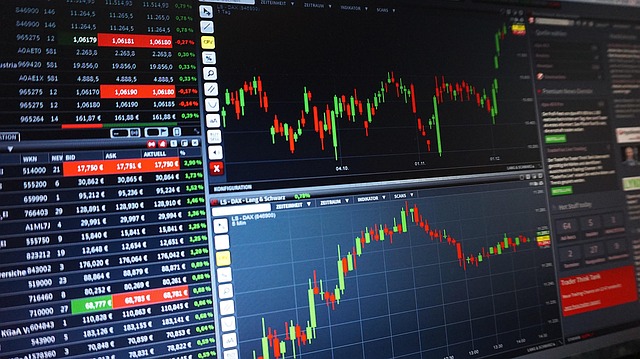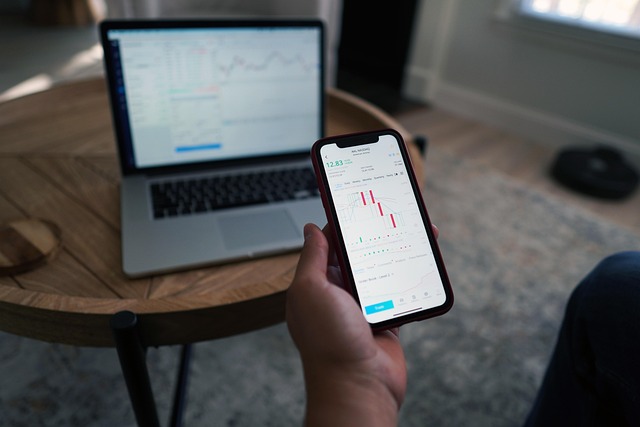Are Stock Trading Bots Legal: Rules, Risks, and Best Practices
Author: Jameson Richman Expert
Published On: 2025-10-25
Prepared by Jameson Richman and our team of experts with over a decade of experience in cryptocurrency and digital asset analysis. Learn more about us.
Are stock trading bots legal? Short answer: yes—typically—but only when used within the law, broker/exchange terms, and applicable regulatory frameworks. This in-depth article explains what trading bots are, where and how they are permitted, the illegal trading behaviors to avoid (spoofing, layering, wash trading), regional regulatory differences, compliance and licensing considerations, best practices for safe deployment, and practical tips for selecting platforms and partners.
- Word count: Comprehensive coverage with actionable guidance
- Who this is for: retail traders, developers, fintech entrepreneurs, compliance officers

Table of contents
- What are stock trading bots?
- Are stock trading bots legal — the overview
- Regional regulatory landscape (US, EU, UK, Asia, Australia)
- Broker and exchange rules, APIs, and rate limits
- Illegal trading behaviors to avoid
- How to use bots legally: best practices
- Licensing, registration, and running bots for others
- Security, liability, and operational considerations
- Choosing a bot and where to test/trade
- FAQ and practical examples
- Conclusion and next steps
What are stock trading bots?
Stock trading bots (also called algorithmic trading systems or automated strategies) are software programs that place orders and manage positions automatically based on predefined rules. They can implement a wide range of strategies—market making, trend following, mean reversion, arbitrage, and high-frequency trading (HFT). Bots can run on a trader’s PC, on cloud servers, or be offered as a service by fintech firms.
Typical components of a bot: data input (market data, news, indicators), algorithmic decision logic, order execution module (via broker API), risk controls (position limits, stop-loss), logging and monitoring. Proper design and governance are critical for both performance and legal compliance.
Are stock trading bots legal — the overview
In most jurisdictions, using trading bots for your own account is legal so long as the activity does not violate securities laws, exchange rules, or broker terms. The legality depends not on the use of automation itself but on the behavior produced by the automation.
Legal uses include:
- Automating a permitted strategy (e.g., limit orders, market orders following predetermined signals)
- Backtesting and paper trading for research
- Automated execution to reduce slippage or latency within exchange rules
Illegal or likely-prohibited uses include:
- Spoofing and layering (submitting and canceling orders to deceive other market participants)
- Wash trading (creating artificial volume by trading with oneself)
- Market manipulation and collusion
- Violating broker or exchange terms of service (e.g., using disallowed API techniques)
Regulators prosecute manipulative automated behaviors. For historical context, criminal enforcement related to algorithmic spoofing demonstrates that automation is not a shield from prosecution. For general information about market manipulation and spoofing, see the Wikipedia entry on spoofing.
Further reading about trading strategies and safe approaches for automated systems: check resources like this article about proven trading strategies for Bitcoin and trader tips and this practical guide on where to earn free crypto safely.

Regional regulatory landscape
Regulation varies by country. Below are the key considerations in major markets.
United States
The U.S. treats manipulative and deceptive trading practices very seriously. Key bodies:
- SEC (Securities and Exchange Commission) — regulates equities and securities offerings
- CFTC (Commodity Futures Trading Commission) — regulates futures and certain derivatives
- FINRA — self-regulatory for broker-dealers and certain market conduct
Rules prohibit spoofing, layering, and fraudulent market manipulation. Brokers and trading firms typically require controls and logs for automated systems. If you operate an automated trading business on behalf of others, you may need to register as an investment adviser or broker-dealer—consult counsel. For official guidance from regulators, see the SEC and CFTC websites.
European Union
In the EU, MiFID II (Markets in Financial Instruments Directive II) creates robust rules for algorithmic and high-frequency trading. Key requirements include:
- Proper testing and risk controls for algorithms
- Pre-trade risk checks and order throttles
- Record-keeping and reporting obligations
- Registration requirements for systematic internalisers and algorithmic trading firms
Firms must meet stringent reporting and surveillance standards across EU markets. See European Commission resources on MiFID II for detailed rules and obligations.
United Kingdom
The Financial Conduct Authority (FCA) enforces similar rules to MiFID II on algorithmic trading. Firms must implement systems and controls that prevent disorderly trading, have adequate governance, and comply with transaction reporting obligations.
Australia
ASIC (Australian Securities & Investments Commission) monitors algorithmic trading activity and expects firms to have proper governance, pre- and post-trade risk controls, and reporting. ASIC has issued guidance and enforcement actions where automated systems produced market distortions.
Asia (Japan, Singapore, India, China)
Regulations vary widely. Japan and Singapore regulate algorithmic trading closely and require risk controls. India’s SEBI monitors manipulative practices. China has implemented stricter controls in recent years and has cracked down on risky automated strategies in both crypto and securities markets. Always review local regulator guidance before deploying bots in these markets.
Broker and exchange rules, APIs, and rate limits
Some of the most practical compliance hurdles come from broker and exchange terms—not just securities laws. Most brokers provide APIs for automation but set limits and terms you must follow. Key considerations:
- API Terms of Service: Most brokers require you to accept an API agreement. Violating it (e.g., abusing API keys, using banned strategies) can get your account suspended.
- Order rate limits and throttling: Exchanges and platforms limit how many API calls or orders you can send per second. For example, platforms that use TradingView alerts or similar services may have alert rate limits—see this TradingView alert rate limit 2025 guide for more about managing alert frequency and integrations.
- Pre-trade checks: Many brokers enforce pre-trade risk checks (max order size, position limits).
- Exchange-specific prohibitions: Some venues restrict quote stuffing, excessive cancellations, or certain order types when used to manipulate markets.
Always read your broker’s API documentation and monitor usage to stay within allowed thresholds. If using third-party tools for signals or alerts, confirm how they integrate with broker APIs and any rate limitations. For example, reputable guides discuss exchange safety and platform security when connecting automated tools—see this practical in-depth guide on whether Binance is safe for trading.
Illegal trading behaviors and red flags
Below are common illegal activities that automated systems can execute (intentionally or accidentally). Avoid these at all costs:
- Spoofing and layering: Placing orders to create a false impression of supply/demand and canceling them before execution. This is illegal in many jurisdictions.
- Wash trading: Buying and selling the same asset to create fake volume or move prices. This is illegal and leads to market distortion.
- Quote stuffing: Flooding the market with excessive messages to slow down competitors’ systems.
- Insider trading: Using material non-public information in automated strategies is illegal regardless of whether a bot executed the trades.
- Collusion and market manipulation: Coordinated strategies that move prices or spread false information.
Automated systems can magnify the impact of such actions and make detection easier for regulators due to electronic footprints. Keep comprehensive logs and ensure your algorithms cannot create manipulative patterns.

How to use bots legally — best practices
Following these best practices helps you stay compliant and reduce operational risk.
1. Know and follow exchange, broker, and regulator rules
Read terms of service and API agreements. Check exchange rulebooks and local legislation. For trading on multiple platforms, maintain a matrix of each platform’s limits and policies.
2. Implement robust pre-trade and post-trade risk controls
- Pre-trade checks: max order size, price bands, time-in-force limits
- Post-trade monitoring: position limits, P&L thresholds, suspicious activity detection
- Kill-switch: an automated shutdown if unexpected behavior or outages occur
3. Maintain detailed logs and audit trails
Record every signal, order sent, cancel, execution, and system decision. Logs help resolve disputes and demonstrate compliance during regulatory inquiries.
4. Test thoroughly: backtesting, simulated trading, and staged rollout
Backtest with realistic data and out-of-sample testing. Use paper trading and small live rollouts to validate system behavior under real market conditions. If you use third-party signals, validate them—see resources on trading strategies and signal systems such as this comprehensive guide to ETHZ signals and systems.
5. Apply conservative default settings
Start with conservative execution speeds and reasonable order frequencies to avoid crossing rate limits or attracting regulatory attention unintentionally.
6. Ensure human oversight
Even automated systems should have human-in-the-loop oversight to intervene if the strategy goes wrong. Many regulators expect firms to have supervisory controls for algorithmic trading.
7. Disclose if providing services to clients
If you operate bots for others, transparent disclosures and appropriate registrations/licensing (see next section) are usually required. Provide performance claims with accurate, audited data and clear risk disclosures.
Licensing, registration, and offering bots to others
Running trading bots for your personal account is different from offering bot-as-a-service or managed trading to clients. When offering services to others, consider the following:
- Investment adviser registration: In many jurisdictions, charging fees for trading advice or discretionary management may require registration as an investment adviser (US SEC/State, EU national regulators).
- Broker-dealer or MiFID authorisation: Accepting client orders or custodying assets may trigger broker-dealer or MiFID licensing requirements.
- Consumer protection and AML/KYC: Running a platform requires anti-money laundering (AML) programs and know-your-customer (KYC) processes in many jurisdictions.
- Data protection law compliance: GDPR and other privacy laws apply when processing client data.
Engage experienced regulatory counsel before offering automated trading services to retail or institutional clients to determine required registrations and compliance programs.
Security, privacy, and operational considerations
Automation introduces cybersecurity risks. Take these steps:
- Use secure key management for API credentials (do not hard-code keys)
- Apply least-privilege API permissions (e.g., disable withdrawals if not required)
- Encrypt logs and sensitive data, and comply with data-protection laws
- Implement distributed monitoring and redundancy to handle outages
- Maintain incident response and disaster recovery plans
Choosing the right cloud provider, using secure CI/CD pipelines, and performing regular security audits and penetration tests help reduce exposure. If you rely on third-party signals or integrations, vet those providers carefully—this article about earning free crypto explores secure ways to interact with external services and signals.

Choosing a bot and where to test or trade
When selecting a bot or platform, evaluate:
- Reputation and track record
- Transparency of algorithms and performance reporting
- Security practices and API controls
- Support for required markets and instruments
- Cost structure (fees, spreads, subscription)
If you want to work with exchanges directly, reputable platforms with robust APIs include Binance, MEXC, Bitget, and Bybit. (Register links included for convenience: Binance, MEXC, Bitget, Bybit.) Always read each exchange’s rules and documentation before connecting your bots.
More resources on building and testing strategies include guides on trading strategies and the technicalities of signals and platforms. For example, explore expert analyses and signal systems in this article on the best trading strategy for Bitcoin and this comprehensive guide to ETHZ signals and system foundations.
Examples, case studies, and enforcement history
Historical enforcement illustrates how regulators treat automated misconduct:
- Spoofing prosecutions: Regulators have brought criminal and civil actions against traders who used automated systems to spoof markets. Such cases show that automation does not shield actors from liability.
- Exchange fines and suspensions: Firms have been fined or had privileges revoked for algorithmic behaviors that violated exchange rules or disrupted orderly markets.
For legal precedent and background reading on spoofing and market manipulation, you can review publicly available resources such as the CFTC’s website and enforcement archives. Always keep legal counsel involved if you suspect your strategy might be close to prohibited behavior.
Frequently asked questions (FAQ)
Are trading bots legal for retail traders?
Yes—retail traders can generally use bots for their own accounts, provided they comply with broker/exchange terms and securities law (no market manipulation, spoofing, or insider trading).
Are arbitrage bots legal?
Arbitrage (buy on one market and sell on another to capture price differences) is generally legal and commonly used by both human traders and bots. Ensure you comply with exchange rules, tax reporting, and anti-money-laundering (AML) requirements.
Can a bot accidentally break the law?
Yes. Poorly designed bots can create manipulative patterns, exceed rate limits, or trigger wash trades. Implement guardrails, logging, and human oversight to reduce this risk.
Do I need to register if I sell a bot?
If you sell software that simply executes trades on a customer’s behalf without providing investment advice, registration requirements may be limited. But if you offer discretionary trading, investment advice, or custody, registration as an adviser or broker may be required. Always consult legal counsel.
Are crypto trading bots treated differently?
Crypto regulatory regimes vary widely. Some jurisdictions treat crypto similarly to securities or commodities, while others have special rules or bans. See resources such as exchanges’ safety guides and platform-specific articles that explore crypto trading safety, strategy, and earning opportunities.

Practical checklist before deploying a trading bot
- Read and document broker/exchange API terms and limits
- Implement pre-trade risk filters and a kill-switch
- Backtest with out-of-sample data and paper trade
- Ensure logs, monitoring, and alerting are in place
- Vet third-party signal providers and integrations
- Understand licensing implications if serving others
- Obtain legal and compliance review for complex or institutional use
Recommended further reading and tools
Technical and compliance resources can deepen your understanding:
- TradingView alert limits and integration best practices — see this TradingView alert rate limit 2025 guide to design reliable alert-driven systems.
- Best trading practices and Bitcoin strategies — practical tips are available in this guide to the best trading strategy for Bitcoin.
- Platform safety and due diligence — read this in-depth look at whether Binance is safe for trading for insight on exchange security and controls.
- Signal systems and algorithmic foundations — a detailed exploration is available in this comprehensive guide to ETHZ signals and systems.
- Practical ways to earn and test crypto safely — this article on where to earn free crypto discusses safe strategies and testing approaches.
Useful official and high-authority resources
- U.S. Securities and Exchange Commission (SEC) — regulatory guidance and enforcement
- Commodity Futures Trading Commission (CFTC) — futures and derivatives enforcement
- UK Financial Conduct Authority (FCA) — rules for algorithmic trading and conduct
- European Commission — MiFID II — EU regulation overview
- Spoofing (Wikipedia) — explanation and historical context

Where to open accounts and test (exchange links)
If you plan to test or deploy bots on major cryptocurrency or multi-asset platforms, consider using reputable exchanges and follow their API guides. Below are links to some widely used platforms (register using the links if you choose):
Conclusion — balancing innovation and compliance
Are stock trading bots legal? Yes, in most cases they are—so long as they operate within the law, follow exchange and broker rules, and avoid manipulative market behaviors. Automation brings efficiency and scale, but also regulatory, operational, and security risks. Proper design, testing, governance, monitoring, and legal counsel are essential.
For traders and developers: start small, instrument every decision with logs and safeguards, and adopt a conservative posture on order frequency and types. If you plan to commercialize a bot or manage client capital, seek regulatory guidance early—registration and compliance requirements can be complex.
For further practical reading on strategies, platform safety, and signal systems, explore resources such as this guide to trading strategies for Bitcoin, this practical article on earning free crypto safely, the TradingView alert rate limit 2025 guide, an in-depth safety analysis of Binance, and this comprehensive guide to ETHZ signals and systems.
Disclaimer: This article is for informational purposes only and does not constitute legal, tax, or investment advice. Laws and regulations change frequently. Consult qualified legal and compliance professionals before deploying trading bots in live markets or offering automated trading services to others.